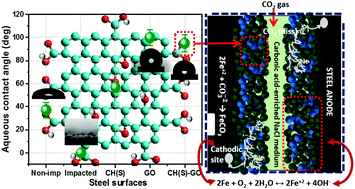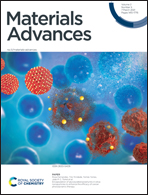Anticorrosion allyl sulfonate graft chitosan/graphene oxide nanocomposite material
Abstract
Chitosan derivatives are easily synthesized since their amine-bound glucosamine molecular units allow for the introduction of reactive chemical groups within their polymer chains. These compounds also act as green corrosion inhibitor molecules for industrial metals with no adverse impact on the environment. In this stduy, we hereby present a synthesis route for introducing allyl sulfonate within the chitosan (CH) molecular chain via its amino groups by Michael addition reaction. Allyl sulfonate graft chitosan (CH(S)) was synthesized by a reaction involving CH and allyl sulfonate, catalyzed homogeneously by acetic acid in alkaline pH using sodium persulfate initiator. CH(S) was subsequently grafted onto graphene oxide (GO) nanosheets. The resultant organic/inorganic hybrid (CH(S)–GO) nanocomposite was then characterized using appropriate techniques and utilized as a corrosion inhibitor for an X70 pipeline steel substrate in a CO2 saturated NaCl electrolyte at 60 °C. The X70 pipeline steel grade is extensively used in various oilfield applications. This nanocomposite significantly inhibited corrosion, and this was attributed to the molecular adsorption and formation of protective polymeric chitosan-GO hybrid nanocomposite films on the metallic surface. The degree of corrosion inhibition between the CH(S)–GO nanocomposite and its CH(S) precursor was comparatively investigated; superior surface protection was revealed only in the presence of the hybrid nanocomposite. The physically adsorbed nanocomposite films on steel contributed to enhanced surface hydrophobicity due to the prevailing low surface energy GO nanosheets. The CH(S) copolymer analogue must have promoted corrosion inhibition but the hybrid (CH(S)–GO) polymer nanocomposite ensured a more compact coverage on steel surfaces, hence was effective as a corrosion inhibitor. Without this nanocomposite, anodic steel corrosion was significant within the test media due to irreversible actions of CO2 induced chloride dissolution episodes. This allyl sulfonate graft chitosan/graphene oxide nanocomposite material may have a future in oilfield chemistry as a corrosion-inhibitor additive in surface-treatment formulations.



 Please wait while we load your content...
Please wait while we load your content...